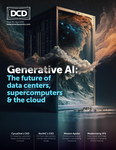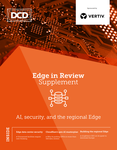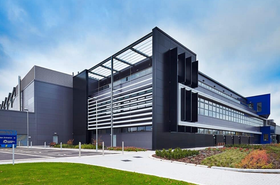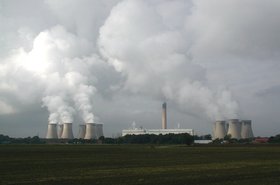The energy supply crisis, the urgent need to achieve net zero, and the rate of development in Generative AI mean the world is changing radically.
While there is a lot of debate surrounding how governments and policymakers can manage the pace of change, there is no doubt that one industry – energy – is going to have to fundamentally transform for a modern era. In particular, the energy grid - the distribution infrastructure that is nearly a century old - needs to adapt to today's requirements.
Over the next few years, there’s going to be a strong focus on how we can make the existing grid a lot smarter. After all, starting again and rebuilding the whole thing isn’t an option - the cost would be enormous. Instead, the energy industry is set to benefit from the rise of smarter tools, digitalization, and powerful technologies like artificial intelligence and quantum computing. All of which offer new capabilities that can be rolled out to better control and maintain the way the grid operates.
AI in action
For example, AI is already proving to be a game-changer within the energy industry for its ability to inform asset management. Underground cables are often weak points in electricity distribution networks. And unexpected failures cause blackouts. Yet it’s difficult to spot warning signs as problems develop over long periods of time – as joints weaken, insulation starts to break down and water gets in.
AI changes this. It has the ability to predict and prevent faults long before they develop into failures by making it possible to identify, locate and classify abnormal activity in buried cables with unprecedented accuracy. Not just cables and joints where failure is imminent – also those where there are previously undetectable signs of faults developing that will inexorably develop into failures, long before fuses are tripped.
AI uses sensors on a low-voltage network to capture waveforms. The waveforms record all activities on the network, including transient pre-fault events. These are automatically analyzed using AI algorithms, which identify activities that are signs of developing faults, including water ingress, mechanical failure of joints, and insulation breakdown – each of which exhibit distinctive peaks and troughs, even in their very early stages.
Analysis of the system becomes progressively more accurate, the machine learning with every scan. It can discriminate between abnormal activities in terms of whether or not they are likely to lead to failure at some point in the future and filter out those activities of no consequence. The technology is also moving rapidly to a level where it will be able to give an accurate prediction of the date when a developing fault is likely to result in a failure.
The proof of the pudding
Initial trials over the last two years showed that the AI approach could identify pre-faults that would lead to failures with an accuracy of up to 95 percent. When cables with identified pre-faults were dug out, there was obvious physical degradation in some cases. In others, there was no apparent problem visually – but splitting the cable revealed internal issues, exactly as flagged.
Trials also proved the AI solution could locate the pre-faults geographically with a three-meter accuracy, compared with older technologies that were accurate to only 10-20 meters. Accuracy of prediction and location are both improving as the system learns more, so the cost and environmental disruption of digging exploratory trenches is being greatly reduced.
Avoiding costs and catastrophes
The immediate financial implications of deploying AI to predict and prevent cable failures are plain to see. An unplanned low-voltage cable repair typically costs £5,000 (~$6,200), plus disruption to customer service. A planned repair typically costs £1,500 ($1,850), with minimal disruption, and can be scheduled and budgeted for as part of a measured asset management strategy.
But far from being simply a find-a-fault solution, part of the potential of AI is that it can create virtual models of whole networks and monitor their health continuously, learning and improving in accuracy as it goes. It can also create multiple ‘what if?’ scenarios and model the consequences of failures. But above all, it accurately analyzes and reports on the root causes of faults.
At the moment, advanced AI is being used to predict and prevent cable faults in low-voltage underground cables, because their vulnerability to failure has a disproportionate effect on the cost and reliability of the grid. But work has already begun on extending AI’s application to medium and high voltage elements of the grid, and this could include submarine power cables, renewables connections, and any part of the underground critical power infrastructure.
One thing is clear - AI will be of particular importance for the grid of the future. Cloud services and shared resources will enable the energy sector to embrace AI and use it to maintain reliable services automatically, and in rapidly changing situations. The natural next step will be to develop AI and deep “self” learning through quantum computing, and we will increasingly be deploying it in a range of situations to create a more dynamic and flexible grid. For instance, AI is likely to play a vital role in helping monitor and predict levels of energy demand to manage supply more effectively – from handling the peaks and troughs that come with intermittent renewable power to supporting the mass uptake of electric vehicles and spikes in charging.
AI may change the world in ways that are impossible to imagine today. But we don’t see it taking over and turning the workplace upside down as is often reported. Instead, we will see it used in an increasing number of applications to solve problems in astounding ways using basic information.








